#website accessibility guidelines
Explore tagged Tumblr posts
Text
y'all know that if the information is in the alt text, writing the alt text out again in an "image ID" is actually MORE hostile to screen-readers, right
#vent#i work in online accessibility. there are guidelines.#half of the common wisdom this site circulates about accessibility for images is straight up wrong#and lengthy exhaustive image IDs are not more accessible than short informative alt text#it drives me up the fucking wall#making the website less usable is not a win
5 notes
·
View notes
Text
I LOVE IT WHEN THE HELP SECTION ON A WEBSITE ONLY HAS VIDEOS AND NO TEXT I LOVE NOT BEING ABLE TO FIND USEFUL INFORMATION AT A GLANCE!!!!!!!!!!!! YAY :)
#/SARCASM IF THAT WASN'T FUCKING CLEAR#sorry lol#i am REALLY feeling the web accessibility guidelines violations this morning#trying to learn about print-on-demand/merch options and some of these websites are. INFURIATING
15 notes
·
View notes
Text
Gonna rant for a second I've been anti-audible for a while --well over a decade, though it wasn't always a position of "Fuck Amazon" --I didn't see the point of paying for access to 1-3 audiobooks per month when I was reading that in a week for free from my library. Did I have to wait sometimes? Sure. but also I was reading 1-3 audiobooks in a week. There were other audiobooks to listen to in the week while I waited --and so I listened to my less popular series while waiting for the more popular series. (for context, the time I'm taking about I was working at a bakery that allowed me to have headphones in, as there were never customers (we worked in a warehouse and shipped to stores and restaurants) so I was listening to 40 hrs a week plus commute times, plus times when I was playing the sims) But what I especially hate is audible exclusives. I had (wrongly) assumed that if a book was audible exclusive, there would be no way to get the book in other formats elsewhere. I run a book club. We democratically select the books for the next year, as long as they are within a few guidelines (we have length requirements within the founding guidelines, we must be able to source them through the public library with the help of the ILL specialist, and I research each book for things like content, pacing, heaviness --so we don't have two slow somber books in a row, mostly, but also so I don't have more than one horror novel in a year type thing. Keeps the books interesting, and keeps the choices balanced.)
One book, requested last year by three members and so very much quickly made the list, ended up being an audible exclusive. I did not check for audible exclusivity when I was making the list --my club wanted to read a book, and I could see that we could get copies of the book, confirmed by the ILL specialist. Great!
Except!!! Except this is an accessibility issue. If someone, for any given reason, needs an audiobook to access this book club (as I often do as someone with adhd for ease but do not need need. I can get by with no audiobook if I must, but if someone has vision issues, well.). If someone needs it and does not want to or have the ability to pay for an audible subscription, they are locked out of that month's book club.
And man that fucking sucks.
#i just needed to rant#im aughhhhhh#the guidelines past the initial ones the original members set up are democratic#meaning that though it is functionally *my* book club I do not make sweeping rules or judgements#I have vague veto power#meaning i can do research on a book and decide it's not good for the club#mostly I do this only for balance reasons as above#but the books still go on a spreadsheet for later access#meaning if it keeps getting suggested I have a tally of how many times it was requested and will relent#but i also use it to select the horror books we read if we read them#fine with allowing horror as i am a fan of horror but it has to be the right level of horror#only about half the group tolerates horror but they're all willing to go ok yeah one a year max is fine#and I've shown them how to get the content warnings and do their research to decide if they're willing to give it a chance it all works out#not the point anyway fuck amazon#fuck audible#check your local library website to see what they do offer#''im in a small town they probably don't--'' check anyway#im so serious check anyway oftentimes small libraries will be in consortium with larger libraries or will have access to things through the#state library#at least in the usa#u may also be surprised at the other things u can get#free seeds for your garden is p common#magazines and puzzles and games and books and audiobooks and classes and programs#ok done in the tags go to the library sorry#well not sorry about go to the library#sorry about the ranting
0 notes
Text
A Complete Guide to DOJ’s Title II Updates for Educational Institutions
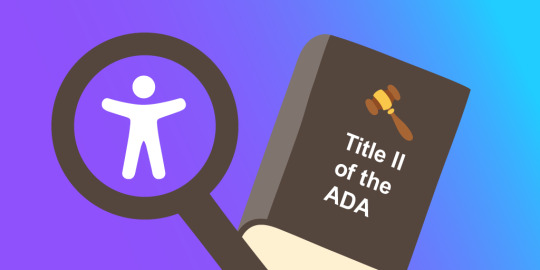
The Department of Justice's Title II digital accessibility mandate is reshaping how educational institutions approach their online presence. With the first compliance deadline approaching in 2026, universities and public schools must act now to ensure their digital resources are accessible to all.
The New Digital Accessibility Landscape
Title II of the Americans with Disabilities Act has expanded beyond physical accessibility to encompass digital spaces. This update affects all state and local government entities, including:
- Public schools and universities
- Community colleges
- Public libraries
- State and local courts
- Public healthcare facilities
The mandate requires these institutions to make their websites, applications, and electronic content accessible according to WCAG 2.1 Level AA standards. Non-compliance can result in lawsuits, loss of federal funding, and reputational damage.
Key Requirements for Educational Institutions
The DOJ's update focuses on four core principles of digital accessibility:
1. Perceivable Content: All digital content must be available to users regardless of their abilities, requiring alternatives like image descriptions and video captions.
2. Operable Navigation: Websites must be fully navigable via keyboard and provide clear pathways for all users.
3. Understandable Content: Information must be presented clearly and consistently across all platforms.
4. Robust Compatibility: Digital resources must work seamlessly with various assistive technologies.
Important Exceptions to Note
While compliance is crucial, certain exceptions exist:
- Archived content not actively used
- Pre-existing documents non-essential to current operations
- Third-party content without formal agreements
Action Plan for Compliance
To meet these requirements effectively, institutions should:
1. Start with a comprehensive accessibility audit
2. Implement WCAG 2.1 standards across all digital platforms
3. Ensure all documents are accessible
4. Train staff on accessibility best practices
5. Plan for compliance deadlines (April 2026 for large entities, April 2027 for smaller ones)
Moving Forward
Digital accessibility isn't just about compliance - it's about creating an inclusive educational environment that serves all students effectively. With proper planning and implementation, institutions can transform this mandate into an opportunity for innovation in education.
Our team at Documenta11y specializes in helping educational institutions navigate these requirements and implement sustainable accessibility solutions. Start your accessibility journey today to ensure your institution is ready for the future of inclusive education.Need expert guidance on digital accessibility compliance? Contact Documenta11y for a consultation on making your educational resources accessible to all.
#Accessibility Audit for Schools#Accessibility in Learning Systems#Accessible Education#Accessible Websites for Schools#ADA Title II Requirements#Compliance Deadlines for Title II#Digital Accessibility for Schools#Digital Campus Compliance#Digital Inclusion in Education#Document accessibility solutions#Documenta11y#DOJ Digital Accessibility#Educational Accessibility Guidelines#Higher Education Accessibility#Inclusive Digital Learning#Inclusive Education Tools#K-12 Accessibility Compliance#Public University Accessibility#Title II Compliance#WCAG 2.1 Standards
0 notes
Text
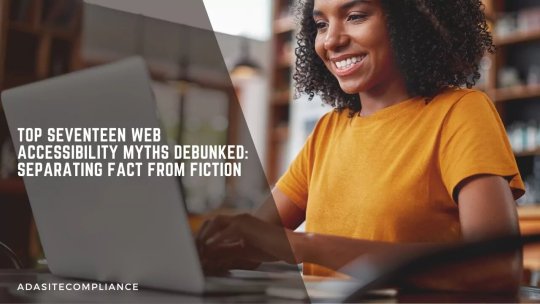
Accessibility Benefits For Businesses
ADA Site Compliance shows the benefits of accessibility for businesses!
#Web Accessibility Myths#Digital Accessibility#ADA Compliance#WCAG Compliance#Inclusive Web Design#Accessibility Testing Tools#Assistive Technologies#Accessible Website Design#Web Compliance#Accessibility Guidelines#Accessibility Misconceptions#Keyboard Navigation#Alt Text for Images#Accessibility Overlays#Color Contrast#website accessibility solutions#ADA site compliance#ADASiteCompliance#adasitecompliance.com
1 note
·
View note
Text
At the risk of destroying my notifications again, I'm back with another fundamentalist Christian translation.
A friend of mine who is studying to become a nurse mentioned that the CDC website on STI treatments had been taken down and she needed for her homework. I tried getting it myself and couldn't. I then tried accessing alternative guidelines I remembered and couldn't get those either.
She was frustrated and said "Why would they do that? Treatment is like the least controversial thing!"
And I was like "Well..."
On the less extreme end, I know lots of fundies who don't want information on STI treatments to be available because then people will think they can go sin without consequences.
The ideal sexual life in fundamentalist Christianity is to be a virgin, court and marry another virgin, and then get married and only ever have sex with that person for your entire life (and have lots of kids). And STIs are seen as proof of that because the only way (in their mind) to avoid them, is abstinence so it must be what God intended.
On the more extreme end, there is the occasional fundie who thinks that treating an STI (of someone who got it through sinning) is actually immoral because "the wages of sin is death" and that is God's design. This was not most people I knew but I certainly heard it enough.
Look, you can poke holes in this all you want but at least spare my notifications of it. Make your own post. I was in sex education on the practical and research side for a few years in part because of this specific issue so it hits close to home.
I mention it so people can know what to expect from this administration and hopefully prepare. Collect quality information especially on marginalized health conditions and be ready to spread it around. If you or a group you belong to have the equipment to run tests and treat them, stock up on supplies.
2K notes
·
View notes
Text
#AODA Compliance#AODA Checklist#Website Compliance#WCAG#Section 508#Disabilities#Screen Magnifiers#WCAG guidelines#Website Accessibility#Contrast Ratios#reCAPTCHA#AEL Data#PDF#Word Document
0 notes
Text
Does My Website Need To Be ADA-Compliant?

Does my website need to be ADA-compliant? Suppose you own a business or organization with a website and people visit your site in order to obtain information about or purchase your products or services. In that case, your site needs to comply with ADA regulations. Websites should be accessible to all individuals regardless of their ability or disability. The ADA is the principal civil rights statute for people with disabilities. Under Title III of the ADA, businesses and nonprofit service providers must make reasonable modifications in policies and procedures to permit access for all people, including those with disabilities.
In this guide, learn if your website needs to be ADA-compliant and what the ADA requires of your business.
Yes, it does.
The Americans with Disabilities Act (ADA) is a civil rights law that prohibits discrimination based on disability. It applies to all places of public accommodation, including websites that are part of those businesses.
Websites should be accessible to all individuals regardless of their ability or disability.
In the United States, the Americans with Disabilities Act (ADA) was signed into law in 1990, which requires all businesses and organizations to provide equal access to their goods and services. Websites should be no exception!
The ADA covers a wide range of conditions that may affect one’s ability to interact with others in various ways. These include: blindness/visual impairment; deafness/hard-of-hearing; autism spectrum disorder; cerebral palsy; diabetes; epilepsy or other seizure disorders; intellectual disability; learning disabilities and/or ADHD (attention deficit hyperactivity disorder); muscular dystrophy; multiple sclerosis or other degenerative brain diseases similar in nature; stroke, traumatic brain injury (TBI)/post-concussive syndrome.
The ADA is the principal civil rights statute for people with disabilities.
The ADA also prohibits discrimination based on disability in all programs, activities, and services offered by public entities. It applies to each of us – doctors, nurses, hospitals; restaurants and hotels; landlords who rent apartments or houses; theaters – any place we go to purchase something or do business.
However, what amounts to “reasonable” will vary from case to case. The law provides several factors for determining whether an accommodation is reasonable: best practices in the industry at issue; other relevant federal laws and regulations that require compliance with standards similar to or more stringent than those required by Title III (for example: Section 508); the resources available at that particular site; whether there are alternative ways of meeting both legitimate concerns raised by the organization as well as its legal obligations under Title III; what types of accommodations other customers without disabilities typically receive at that location or venue; how often customers without disabilities experience difficulties accessing such facilities due to structural barriers; whether making a change would be impracticable because it would produce significant economic hardship on small business owners who operate limited-service restaurants or retail stores catering primarily toward one sex or gender-based upon stereotypes about manners associated with certain genders (which might warrant a finding that allowing individuals into these locations would fundamentally alter their operations).
Legal action has already been taken against businesses where it was determined that their website was not compliant with ADA rules.
ADA compliance is not a suggestion, it’s a requirement. If you run any sort of business that has a physical presence, and if more than one person is present at that business, then ADA compliance applies to you.
This includes everything from the most basic retail store to your own website and digital presence. If you offer goods or services online (even if they’re free), then ADA compliance applies to your website as well.
The government has also made clear that they’re not just interested in large businesses when it comes to ADA rules—they want every business owner and operator on board. The law states: “The Americans with Disabilities Act requires all public entities…to ensure effective communication with individuals with disabilities.”
Web Content Accessibility Guidelines.
The Web Content Accessibility Guidelines (WCAG) 2.1 became effective on June 5, 2018. WCAG 2.1 builds upon WCAG 2.0 to ensure compliance with ADA regulations and laws by providing website owners with guidelines for ensuring that the content on their websites is accessible to all users, including those who have physical or mental disabilities. These include visual impairments (low vision, color blindness), hearing loss, physical limitations (mobility impairments), and cognitive limitations (dyslexia and language disorders).
The updated guidelines can be applied immediately when making changes to existing websites or content or planning new ones, even if a site hasn’t been built yet.
Conclusion
Keeping up with the latest web accessibility guidelines is important, but it’s not always easy. If you’re looking for ways to improve your website’s compliance with ADA standards or just want to ensure that it complies with other legal obligations, contact the experts at Reversed Out Creative today!
Contact Us
At Reversed Out Creative, we understand the challenges and opportunities presented by AI disruption. Our team of experts specializes in web design, SEO, graphic design, and digital marketing services. Reach out to us through our contact form to learn more about navigating the evolving job market and embracing the potential of AI. Together, let’s shape a future that combines human ingenuity with the power of AI.
Original content source: https://reversedout.com/does-my-website-need-to-be-ada-compliant/
#ADA compliance#Website accessibility#Accessibility standards#Web accessibility guidelines#Web accessibility best practices#The Americans with Disabilities Act
0 notes
Text
I’m off work today but I’m thinking about it anyway and I’m thinking, you know, what cottage lawsuit industry is going to pop up next (if it hasn’t already) and my guess would be on CCPA/CPRA etc violations for small businesses
#similar to how there’s a cottage industry to ADA lawsuits for websites#mainly for small businesses#not saying that having accessible websites is bad#but slapping lawsuits on small business just to make some quick cash (when no disabled person has filed the suit) is a weird niche industry#and these are usually low traffic sites or sites built by the owner#basically in 2013 the DOJ released updated ADA guidelines for websites (a good thing)#and immediately the number of lawsuits increased 177% the first year#mostly because it’s really easy to find ADA tools to scan your website online#and then for every violation you get 4k (and there can be hundreds of violations)#so naturally Jim Sr who asked his son to set up a website in 1999 for his wood making business and hasn’t changed it since#is now getting a legal action letter saying he’s going to be sued for 80k (plus legal fees)#or he can settle for x y z dollars#big and medium companies definitely be making things accessible#but I don’t think (personally) lawsuits on small businesses en masse are like a super cool way of doing this#anyway since now you can file CCPA/CPRA requests online it might become a thing#since those are also a per violation payout#and if you’ve done any business with California residents and make over…. 50k a year from your business? I think#you’re liable under this law#thoughts? thoughts
0 notes
Text
A Comprehensive Guide to ADA Website Accessibility Guidelines
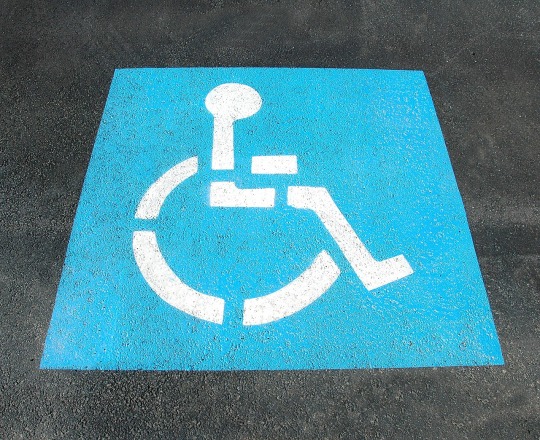
In the ever-evolving digital landscape, creating an inclusive online environment is not just a choice; it's a responsibility. ADA (Americans with Disabilities Act) website accessibility guidelines play a pivotal role in ensuring that websites are accessible to everyone, regardless of their abilities or disabilities. In this comprehensive guide, we'll delve into the key aspects of ADA website accessibility guidelines, shedding light on why they matter and how you can implement them to enhance user experience and reach a broader audience.
1. Understanding ADA Website Accessibility Guidelines:
ADA website accessibility guidelines are a set of standards designed to make digital content accessible to individuals with disabilities. These guidelines cover a wide range of aspects, including but not limited to, web design, development, and content creation. The primary goal is to break down barriers and provide equal access to information and services for everyone.
2. The Importance of ADA Compliance:
Achieving ADA compliance isn't just about following regulations; it's about creating an inclusive online space. Non-compliance not only risks legal consequences but also excludes a significant portion of the population from accessing your website. By adhering to ADA guidelines, you not only meet legal requirements but also demonstrate a commitment to inclusivity, fostering a positive brand image.
3. Key Components of ADA Website Accessibility
Content Accessibility: Ensure that your website content is perceivable, operable, and understandable for all users. This includes providing text alternatives for non-text content, making multimedia content accessible, and ensuring readability.
Navigation and Structure: Create a clear and intuitive navigation structure. Proper heading structures, labels, and navigation menus contribute to a seamless browsing experience for users with screen readers or other assistive technologies.
Color and Contrast: Pay attention to color choices and contrast ratios to accommodate users with visual impairments. Make sure that information is conveyed effectively, regardless of the user's ability to perceive certain colors.
Forms and Interactive Elements: Design forms and interactive elements with accessibility in mind. Provide clear instructions, use labels correctly, and ensure that all form fields are easily navigable and operable.
4. Testing and Evaluation
Regular testing is crucial to ensuring ongoing ADA compliance. Conduct regular audits and usability tests, seeking feedback from individuals with disabilities. This iterative process helps identify and address accessibility issues promptly.
5. Implementing ADA Compliance in Web Development:
Accessible Coding Practices: Adopt coding practices that prioritize accessibility. This includes using semantic HTML, providing alternative text for images, and ensuring proper document structure.
Responsive Design: Create a responsive design that adapts to various devices and screen sizes. This not only benefits users with disabilities but also improves overall user experience.
6. Staying Updated with Evolving Standards: The digital landscape and accessibility standards are continually evolving. Stay informed about updates to ADA guidelines and other relevant standards to ensure ongoing compliance and optimal user experience.
Conclusion
Embracing ADA website accessibility guidelines is a step towards creating a more inclusive digital space. By prioritizing accessibility, you not only comply with legal requirements but also contribute to a more diverse and user-friendly online environment. Implementing these guidelines fosters a culture of inclusivity, making your website a welcoming space for all users, regardless of their abilities.
1 note
·
View note
Text
The "tiktok ban" should scare you and here's why.
Rant made by an autistic, history-loving, chronically online American tiktok cosplayer. Please let me know if I've gotten anything wrong and I will edit the post.
Reblog to spread awareness!
This is not just about Tiktok, and it's not about national security. The Tiktok ban is wrapped up in the "Protecting Americans from Foreign Adversary Controlled Applications Act" which has the ability to ban any foreign website or app that the United States government sees as a threat to their "democracy." Not only that, but if the gov't didn't want China to gather data, then they would ban things like Shein and Temu (the latter which they advertised during the Super Bowl), which collect similar data that Tiktok does. If they wanted to prevent our data being stolen in general, they would ban companies like Meta, which monetarily supports the Tiktok ban and had to change their name because "Facebook" was associated with the largest data leak in history.
The documentations of the Tiktok court interrogations prove how incompetent our government is. Repeatedly asking the TikTok CEO Mr. Chew if he's Chinese while he repeatedly assures them he's Singaporean. The officials being concerned that they can't find Singapore on a map. The officials then being confused why the app would be able to have access to their wifi because it needs wifi to load.
The possibility of the US buying Tiktok exposes a greater issue in America: monopolies. The Sherman Antitrust Act was passed in 1890 that restricted the activities of large companies known as monopolies, which started out as small companies and would either buy other companies or buy the factories which produced all their materials. This eliminated competition in the market and gave the monopolies almost full control of quality and prices of items, and it was considered very anti-American at the time. Since the US already has multiple major social medias, including Facebook (Meta), Instagram (Meta), Threads (Meta), X (formerly Twitter), Snapchat, and Reddit, adding Tiktok would mean that nobody could compete with the US in the social media market. This makes them a monopoly, and it's incredibly dangerous.
Banning Tiktok breaks several American trademarks. A) the Republicans banning Tiktok are very concerned about their second amendment right to own guns, but they seem to not care about the first amendment right to freedom of speech and press, which Tiktok delivers. Of course there are app guidelines, but for the most part you have fairly uncensored political and ethical commentary like no other social media. B) the only other countries that have banned Tiktok are either heavily demonized by America or are direct targets for American propaganda (ex. China), which really doesn't make the ban look good. C) banning a social media for the purpose of censorship is a trademark of communism, which Americans are INCREDIBLY wary of.
Your country may follow in suit. Because of America's influence as a global superpower and an ally to many other major powers, America banning Tiktok would likely lead to a domino effect in other countries.
The rich get richer. There is a concept called social darwinism, in which it is the rich's beliefs that the poor must fend for themselves without the help of the government in order to make a living - "survival of the fittest." Tiktok contributed around $14.7 billion USD in 2023 and $24.2 billion in 2024, and it supports around 224,000 jobs [source]. The actual Tiktok website says in 2023, they contributed $15 billion USD in revenue and supported 7 million US businesses [source]. Without these jobs, there could be in increase in homelessness, debt, and sickness due to withdrawals (if you're incredibly addicted to Tiktok) and lack of quick dopamine hits (due to the rapidfire nature of the algorithm).
Remember that the president is not your friend !! Many of the political figures rallying to support Tiktok right now, such as President Biden, initially voted for the ban. President Biden is likely supporting now so that Trump won't get credit for it, and future President Trump is likely doing it for brownie points among younger generations.
The Xiaohongshu migration exposed the American government and its lies. The stories from American 'Tiktok refugees' about the questions from native Chinese on the Xiaohongshu / Rednote / Redbook app (considered the Chinese mixed of Pinterest, Instagram, and Facebook) posed a lot of conspiracies and realizations about the American government. The Chinese actually own their homes, they have lower food prices than we do, and they have a slim homelessness rate. Whether this is true or not, it has greatly influenced how we see ourselves in the grand scheme of the American oligarchy, and that is not something that can be suppressed with an app being banned.
Tiktok is not totally Chinese! The CEO is Singaporean, as I've already stated, and there are multiple headquarters in the US, with the main one being in Los Angeles.
In conclusion...
Whether Tiktok is banned or not, whether permanently or not, no matter who saves it or rallies against it, remember that it is harder to scare and control someone when they are in a group. And if you think this was interesting, I'd love it if you could reblog to show some support and inform your friends as well. <3
THIS IS NOT RIGHT VS LEFT❗️IT'S UP VS DOWN❗️
#tiktok#tiktok ban#political#finch and the bard analysis#rednote#xiaohongshu#little red book#tiktok refugee#china#america#usa politics
1K notes
·
View notes
Text
PAY WHAT YOU WANT COMMISSIONS 🇵🇸
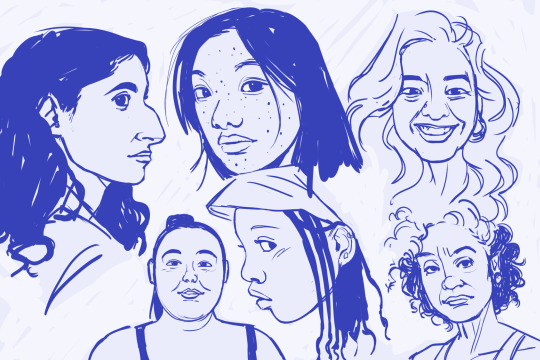



I will accept art requests based on ANY donation to a campaign from gazafunds.com
(website of compiled + fully vetted gofundme links; if you find the list overwhelming I recommend supporting the spotlight campaign featured on their front page)
OR the Municipality of Gaza
(whose goal is to restore access to water in Gaza City after half their water wells + 42k meters of water networks have been destroyed by Israel’s occupation)
I will accept drawing requests in exchange for recipet of donation to either of these viable sources!
Palestine will live to see liberation 🍉
SEE REQUEST GUIDELINES BELOW
•Higher donation = more time spent
•Even a tiny amount is sketch guaranteed! Anything is better than nothing
•DM/email request + receipt of new donation
•No revisions
•Keep SFW
•Hate speech/joke requests will not be tolerated
#free palestine#commissions#I do not have much power alone but we have our art and we have our voices and we have our efforts and most importantly we have hope#So we must do what we are able to within our means especially those of us unaffected directly/contributing indirectly through tax dollars#There is still power in that#Something is always superior to nothing#Don’t let anyone convince you otherwise
2K notes
·
View notes
Text
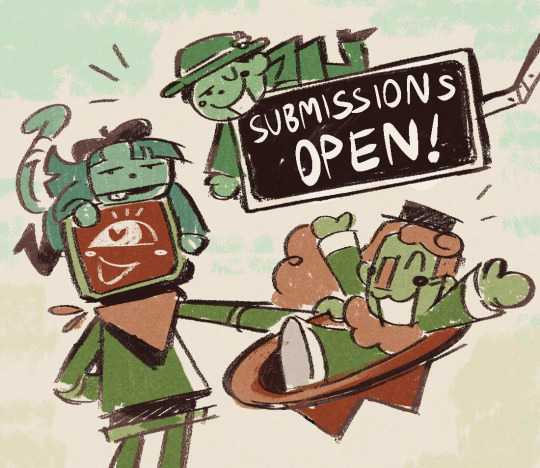
Art Submissions are NOW OPEN for the DOWN LIMBO LANE Collab!📣🌼🙂
This form will close on MAY 10TH! info + form below!
RECAP🌼
Here is the original announcement post for this project! Here's a little TLDR:
Celebrating Smile For Me's 6th Anniversary, this year's art collaboration is open to all LimboLane games, dedicated to highlighting this growing community!
Artists will make visual pieces featuring anything from ANY LimboLane Project ( Smile For Me, FACE LOVE, Great God Grove & L4CEY ) - Focus a piece on one game, two, ALL - One character, Multiple, Ships, Canon, Crossovers between the games, GO HAM!
This will be a DIGITAL GALLERY rather than a Zine -- artwork will be hosted on a Website, rather than a PDF. Anyone can join and submit work before the deadline MAY 10TH!
For the full timeline, description, submission guidelines (Keep images PG + under 10MB), and to SUBMIT WORK, please view the form below! :-D
🌼SUBMISSION FORM🌼
If you do not have a Google account and are unable to access the form, please send an email to [email protected] from your preferred email address! We will send you an alternate instructions via email as soon as we are available.
And of course, feel free to ask any other questions! HAVE FUN! 🌼
269 notes
·
View notes
Text

Draconity: A Draconic Zine || Info Doc
It’s time to celebrate! Let’s come together to create something for the community. Whether you got scales, feathers, fur or otherwise we want to hear from you. What does draconity mean to you?
This zine will be a collection of pieces created by nonhumans and alterhumans about any aspect of draconity they feel called to share. Also, this zine imposes no set definition on what is or isn’t “dragon enough.” If you feel like the label applies, you’re included!

What Can I Submit?
Both fiction and nonfiction pieces are accepted. As long as what you have in mind fits the theme, it’ll probably be a-ok.
Off the top of our head, we’re thinking of:
Essays of your personal experiences
Short stories
Poetry
Mock advice columns
Alternative covers
Fictional advertisements
Comics
Recipes
We welcome you to think outside the box and share whatever inspires you about being draconic!

How to Participate
Fill out our google form to submit an entry.
A name you would like the piece attributed to
Title of your submission
Any content warnings that you feel are necessary for the piece
Any social media handle or personal website you'd like linked in the contributor section
A logo or icon for the contributor section
**If you would like to stay anonymous let us know
Submit the form multiple times for multiple entries. Members of systems are welcome to submit individually or collectively. Please let us know your preference when it comes to attribution.
Once the deadline has passed, these submissions will be put into the zine and it will be posted on itch.io as a free PDF.
Submissions are due by November 1st, 2025.

Submission Guidelines
Each individual may submit up to 3 works to be featured in Draconity. Comics and multi-image works count as one piece. Individuals within a system may each submit up to 3 works. All work must be your own! Anyone caught plagiarizing or submitting AI-generated work will be barred from entering Draconity and any future zines from us.
Written submissions and multi-part art entries should not exceed 10 pages. Please keep in mind the zine’s pages will be 8.5x11 and entries will be scaled accordingly to fit that size. We request all art submissions to be sent in either .jpg or .png file formats.
For stories that use multiple different fonts, we will do our best to preserve the general "feel" of your piece but cannot guarantee we will be able to use the exact fonts or sizes due to restrictions in what fonts we have access to, readability and overarching zine style.

Submissions Must Fit the Thematic Criteria of:
About draconity / being draconic
That’s it! Go wild.
As stated in the summary, we will not be policing what is or is not considered “dragon.” If you self-identify as draconic you count! No portfolio or prior zine experience is needed to be included either.

FAQ
Q: Where will the zine be hosted? What will it cost?
A: The zine will be hosted digitally on our itch.io and will be free to download.
Q: Is there a cap on submissions?
A: There is none, as long as the file doesn’t start getting too big for our computer we’ll do our best! If there are an unprecedented amount of submissions, we may have to delay the release. In the event that happens, we would communicate that through updates on our tumblr.
Q: Can I update my application after it’s been submitted?
A: Yes you may, as long as it’s done before the submission deadline.
Q: Can I rescind my submission?
A: Yes you may, as long as it’s done before the submission deadline. This is because once we begin work on the zine, having to remove content mid-way through would throw off the formatting of everything else after. Please take this into account before submitting.
Q: Will this zine allow NSFW entries?
A: No, nothing 18+ will be accepted.
Q: Can I submit already completed/published works?
A: Absolutely! It’s ok to submit past work that has been posted to your social media or website. Our only stipulation is that it cannot have been previously featured in another zine. This helps us keep each of our annual Draconity zines unique and distinct from one another.
Q: What is your timeline for the project?
A: Our submission deadline is November 1st, 2025. Our goal is to have the zine live by the end of the year. If something unforeseen happens and we are unable to make that deadline, we will post an update about it on our tumblr.
Q: I have another question!
A: Feel free to reach out to us at our email RuffledGryphgon(@)gmail(.)com with any other questions you have about the zine.

Previous Community Zines:
Modern Draconity
My Gender is [NOT] Human
#alterhuman#nonhuman#otherkin#therian#fictionfolk#fictionkin#nova squawks#Draconity Zine#our art#id in alt
121 notes
·
View notes
Text
2025 Podcast Jam
The Podcast Jam is BACK for 2025! If you're unfamiliar, the PodJam is an event running from February to May in which teams of editors, writors, and actors collaborate to create the pilot episode of a new audio drama.
A handful of things have been updated following last year's jam, particularly with the timeframe: the creation period has been extended to a "Jam Month", so teams will now spend roughly a week in each phase of production - writing, voice acting, & editing. Here's the schedule:
Sign-ups: January 31st - March 23rd
Team Submission Form Deadline: March 30th
Team Announcements: April 5th
Final Project Withdraw Date: April 20th
Jam Month: April 7th - May 4th
Episode Submission: May 5th
Public Episode Release: May 24th
Jam Closing Ceremony: May 24th
SIGN UP HERE
SUBMIT A TEAM HERE
We're really excited to bring this event back, it was incredibly fun last year & we can't wait to check out the shows y'all create for the jam ✨. Further event details and guidelines are available in the Discord and on the website. To access the Jam category in the server, please open a Jam Support ticket or ping a moderator to be given the participant role after signing up for the event.
200 notes
·
View notes
Text
Accessible Website Design
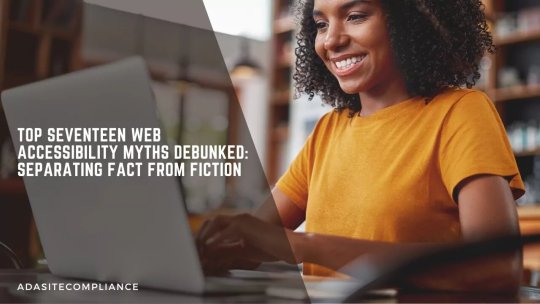
Top Seventeen Web Accessibility Myths Debunked: Separating Fact from Fiction
Accessibility is no longer a ‘luxury’.
Incorporating accessibility into a website today comes part and parcel with web development. With the internet harboring users with and without disabilities who use it for information, bookings, enrollments, purchases, and even jobs, websites need to be compliant.
Unfortunately, many aren’t because some misconceptions and myths cause confusion and hesitance to hinder progress. So here’s an attempt at separating fact from fiction by debunking the top 17 common web accessibility myths.
Remember, web accessibility is no longer just a legal requirement; it’s part of digital inclusivity. It increases your reach and demonstrates your commitment to serving everyone in your community.
If achieving compliance seems overwhelming, we at ADA Site Compliance can simplify things for you. Our team of accessibility experts can help you meet these requirements while you focus on your core business.
Top 17 Web Accessibility Myths Debunked
Let’s now examine these widely misinterpreted web content accessibility principles and guidelines. At the end of the article, you will realize that all those misconceptions you had about web compliance are just myths.
Myth #1- Web Accessibility is Only for Blind People and Users with Visual Impairments
False.
Other people with varied disabilities, such as deafness, limited motor skills, and cognitive limitations, also visit websites for various reasons. An accessible website gives them access to the information they seek, ensuring your website reaches more people.
Myth #2- Web Content Accessibility Guidelines Compliance Ensures Digital Accessibility
False.
Yes, the WCAG provides a framework to enhance digital accessibility. However, compliance alone is not enough for a completely accessible website. Website owners and developers must understand and implement the WCAG principles, as factors like cumbersome user interfaces, poor content, and insufficient testing can lead to incompliant websites.
Myth #3- Accessibility is Only About Making Websites Accessible
False.
Accessibility applies to other digital assets, including mobile applications, PDFs, and other digital documents. Organizations must thus ensure accessibility across all digital platforms for inclusive digital experiences.
Myth #4- Accessibility is Only Relevant for Disabled People
False.
It is not just people with disabilities that benefit from website accessibility. Digital compliance features benefits extend to broader groups, including:
Older adults facing sensory or cognitive challenges as they age
Individuals with temporary disabilities due to injury, illness, or surgery
People experiencing situational limitations, like background noise
Non-native speakers struggling with language barriers hindering understanding and engagement
Myth #5- Accessibility Means Redesigning a Less Visually Appealing Website
False.
Many businesses believe digital accessibility requires a complete website overhaul or poor visual appeal, which is far from the truth. Minor adjustments can significantly create an accessible digital experience without significant redesign efforts.
Myth #6- Digital Accessibility is Only a Concern for Large Corporations
False.
Size is not a criterion for digital accessibility; failure to meet the many digital accessibility laws can lead to legal repercussions and damage a company’s reputation.
Small businesses may face resource constraints, but the numerous tools and online resources can help them understand and ensure web compliance. Embedding accessibility practices from the start ensures web compliance for companies of all sizes.
Myth #7- Accessibility Limits Websites to Text-Only Content
False.
The myth that accessible websites must be plain, text-heavy, and free of multimedia elements stems from earlier text-based web pages. However, modern standards allow visually engaging, multimedia-rich websites that meet diverse accessibility needs.
Strategies like adding alt text for images and captions and transcripts to videos ensure compatibility with assistive technologies. It not only supports users with disabilities but also enhances everyone’s user experience.
Myth #8- All It Takes Is A Quick Technical Fix For an Accessible Website
False.
Web compliance is more than a simple technological adjustment. True accessibility is not just a developer’s responsibility but the joint effort of various teams, including design, testing, and content creation. Relying solely on automated tools or accessibility overlays does not ensure comprehensive accessibility.
Myth #9- Accessibility Can Be Addressed Last-Minute with Simple Fixes
False.
While adding elements like alt text at the last minute may seem convenient, genuine accessibility requires careful planning and integration. Last-minute changes usually require significant counterproductive restructuring, which may harm the user experience, especially for those requiring accessible design.
Besides, including alt text in sites is only one piece of the accessibility puzzle. A truly compliant website involves various other steps, including:
Semantic HTML tags to structure content and enhance readability and interaction.
Keyboard Navigation of the website.
Color Contrast to make text and images readable.
Focus Management highlights elements currently in use for better navigation and clarity.
Using Selective ARIA when necessary to support assistive technologies, as overuse can create confusion.
An accessible design demands proactive attention to these elements throughout development rather than depending on quick fixes at the end.
Myth #10- Accessibility is Expensive and Time-Consuming
False.
Integrating accessibility into an existing website can seem complex, require multiple resources, and be time-consuming. However, prioritizing accessibility from the start can significantly reduce most associated challenges.
In fact, with the right planning and skilled development teams, accessibility can be achieved with minimal additional time and resources as an integral part of the development process.
AI-powered accessibility tools also make digital accessibility more affordable and accessible for all website owners to use and ensure websites are accessible for individuals with disabilities. They help achieve substantial accessibility improvements in just a few hours by automating the detection and correction of many common accessibility issues.
Myth #11- Achieving Web Accessibility Is Overly Complicated
False.
Web accessibility standards can seem complex, but their implementation is not complicated. Multiple tools and resources are available to help developers and website owners ensure digital accessibility.
It is better to start with basic principles, such as providing alternative text for images and ensuring keyboard navigation, and then later delve deeper into more advanced techniques.
Besides, remember that automated accessibility testing alone cannot guarantee complete digital accessibility. Automated tools can help identify issues such as color contrast and structural errors.
However, they cannot fully address complex challenges like unclear language and intricate site designs. Human review by accessibility experts is crucial in ensuring website compliance.
Myth #12- Accessibility is Just a “Nice-to-Have” Feature
False.
Ensuring website compliance is not an option; it is a strategic move with significant potential to impact your business success. An accessible website can do a lot for your business, such as attracting a larger audience, driving higher revenue, enhancing brand reputation, and mitigating legal risks.
Besides, with legal scrutiny, accessibility can no longer be an option. A website owner does not want a lawsuit, considering the financial and reputational risks of overlooking accessibility efforts.
Myth #13- Accessibility is All About Avoiding Legal Trouble
False.
Contrary to popular belief, accessibility is not only about meeting legal requirements to avoid lawsuits. Legal compliance is essential, but its benefits extend far beyond this. For example, implementing accessible design dramatically enhances user experience and boosts your brand’s reputation.
Besides, accessible content opens your entire website or application to a broader audience, ultimately increasing user satisfaction and building loyalty.
Myth #14- Digital Accessibility is Optional
False.
Accessibility is more than an option; it is a requirement in many countries, enforced through laws and regulations. It may not be the top priority for all website owners, but digital compliance is essential for ethical reasons and for creating an inclusive experience for everyone.
Following accessibility standards helps meet legal obligations and ensures your website reaches a broader audience, including individuals with disabilities.
Myth #15- It’s Better To Have Separate Websites for Disabled Users
False.
It was previously thought that having a separate website for users with disabilities ensured accessibility for disabled people. However, this strategy is ineffective and biased, as managing multiple websites is expensive and work-intensive and can lead to content and performance discrepancies.
It is, instead, better to design and develop a website that is inherently accessible to everybody from the beginning.
Myth #16- Accessibility is a One-Time Fix
False.
Many people think digital accessibility is a one-time fix, with nothing else to do once experts ensure compliance. This misconception has led to poorly designed products that users cannot effectively access.
On the contrary, web compliance requires constant commitment and oversight, with continual integration of accessibility features from the initial design through ongoing maintenance. Website owners and developers must regularly review and update the website to meet evolving accessibility standards and user needs.
Myth #17- Only Disabled Individuals Can Test To Ensure Accessibility
No, this is false.
Disabled individuals who frequently rely on assistive technology are effective accessibility testers. However, they are not the only people equipped to evaluate accessibility. All that is needed are the proper training and accessibility testing tools to become adept at identifying and addressing accessibility issues.
Closing thoughts
Dispelling these seventeen myths should inspire a more inclusive web design and development mindset. Remember, accessibility is a legal requirement and moral commitment to making the digital world available to everyone, regardless of individual abilities.
By prioritizing accessibility in our choices, we can create a more equitable, user-friendly online experience for all. It also increases your reach and demonstrates your commitment to serving everyone in your community.
Do not worry if achieving compliance seems overwhelming. We at ADA Site Compliance can simplify things for you. We have a team of accessibility experts who can help you meet these requirements while you focus on your core business!
#Web Accessibility Myths#Digital Accessibility#ADA Compliance#WCAG Compliance#Inclusive Web Design#Accessibility Testing Tools#Assistive Technologies#Accessible Website Design#Web Compliance#Accessibility Guidelines#Accessibility Misconceptions#Keyboard Navigation#Alt Text for Images#Accessibility Overlays#Color Contrast#website accessibility solutions#ADA site compliance#ADASiteCompliance#adasitecompliance.com
0 notes